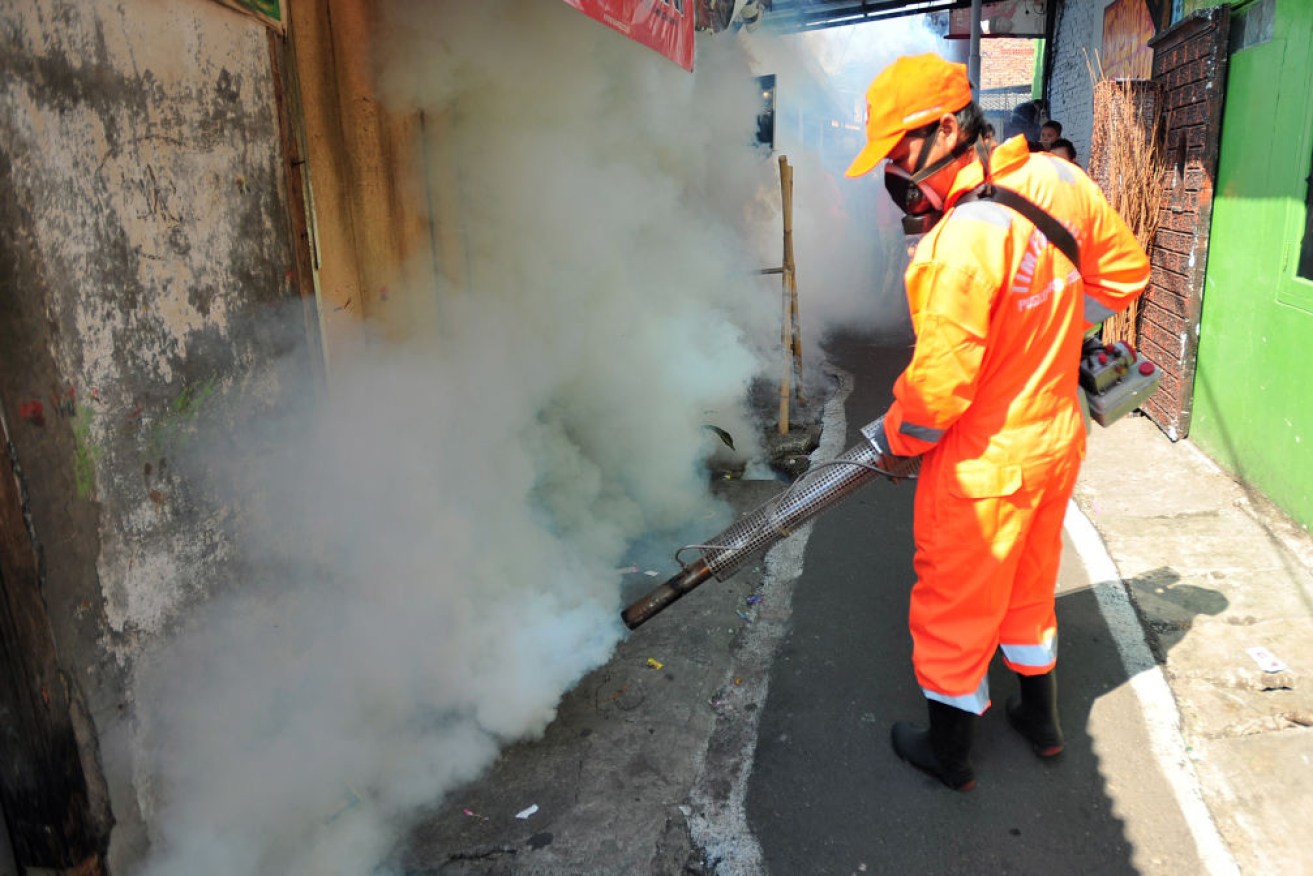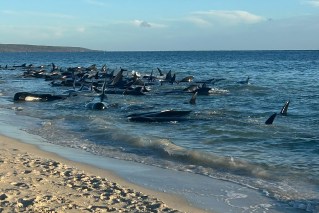El Nino triggered global disease outbreaks: Good chance it’s coming back


Jakarta health workers fog a street in Jakarta, in July, 2018, to control the spread of dengue fever. Photo: Getty
As the hottest summer on record refuses to die – so much of the country dead-dry, parts of it ablaze – the question is what’s next?
Forecasters predict a warmer autumn, a below-average rainfall – the drought unlikely to be broken any time soon – and maybe El Niño will turn up after all. And that’s a little scarier than we ever thought it would be.
As it stood through summer, there’s a 50 per cent chance – twice the normal likelihood – of El Niño developing during the southern hemisphere autumn or even winter.
And with it comes the risk of a global outbreak of disease – plague, cholera, dengue fever and more – if it’s anything like the El Niño of 2015 and 2016, according to a new report from NASA scientists.
Different diseases, same cause
By analysing satellite data and modelling to track climate anomalies, along with public health records, the space agency, for the first time, was able to comprehensively assess the public health impacts of this major climate event on a global scale.
“The strength of this El Niño was among the top three of the last 50 years, and so the impact on weather and, therefore, diseases in these regions was especially pronounced,” said lead author Dr Assaf Anyamba, a research scientist at NASA’s Goddard Space Flight Center in Greenbelt, Maryland, in a prepared statement.
El Niño is an irregularly recurring climate pattern characterised by warmer-than-usual ocean temperatures in the equatorial Pacific, which creates a ripple effect of anticipated weather changes in far-spread regions of Earth.
During the 2015-2016 event, changes in rainfall, land-surface temperatures and vegetation growth created fertile conditions for transmission of diseases, resulting in a spike in reported cases for plague and hantavirus in Colorado and New Mexico, cholera in Tanzania, and dengue fever in Brazil and Southeast Asia, among other outbreaks.
Australian mosquito outbreak part of global problem
During that time Australia, saw a 20-year spike in dengue fever, the advent of the Zika virus and hundreds of cases of Ross River fever – all linked to a booming mosquito population. This appears to be in line with what was happening overseas.
In Brazil and Southeast Asia during the El Niño, dengue fever proliferated. In Brazil the number of reported cases for the potentially deadly mosquito-borne disease in 2015 was the highest from 2000 to 2017.

A researcher from the Butantan Institute of São Paulo, Brazil, shows off his immunity to dengue fever-carrying mosquitoes, because of a tetravalent vaccine developed in 2016, at the height of the epidemic caused by El Nino. Photo: Getty
In Southeast Asia, namely Indonesia and Thailand, the number of reported cases, while relatively low for an El Niño year, was still higher than in neutral years.
In both regions, the El Niño produced higher-than-normal land surface temperatures and therefore drier habitats, which drew mosquitoes into populated, urban areas containing the open water needed for laying eggs.
As the air warmed, mosquitoes also grew hungrier and reached sexual maturity more quickly, resulting in an increase in mosquito bites.

Indonesia responded to its dengue fever epidemic with a fogging insecticide campaign. Photo: Getty
Based on monthly outbreak data from 2002 to 2016 in Colorado and New Mexico, reported cases of plague were at their highest in 2015, while the number of hantavirus cases reached their peak in 2016.
Rats carrying virus, well fed because of rainfall
The cause of the spike in both potentially fatal diseases was an El Niño-driven increase in rainfall and milder temperatures over the south-west of the United States, which spurred vegetative growth, providing more food for rodents that carry hantavirus.
A resulting rodent population explosion put them in more frequent contact with humans, who contract the potentially fatal disease mostly through faecal or urine contamination. As their rodent hosts proliferated, so did plague-carrying fleas.
In east Africa’s Tanzania, the number of reported cases for cholera in 2015 and 2016 were the second and third highest, respectively, over an 18-year period from 2000 to 2017.

Increased rainfall caused by El Niño in 2015 led to the biggest outbreak of cholera since the turn of the century. Photo: Getty
Cholera is a potentially deadly bacterial infection of the small intestine that spreads through faecal contamination of food and water.
Increased rainfall in east Africa during the El Niño allowed for sewage to contaminate local water sources, such as untreated drinking water.
“Cholera doesn’t flush out of the system quickly,” Dr Anyamba said. “So even though it was amplified in 2015-2016, it actually continued into 2017 and 2018. We’re talking about a long-tailed, lasting peak.”
Seasonal forecasts allow for preventative measures
The strong relationship between El Niño events and disease outbreaks underscores the importance of existing seasonal forecasts, said Dr Anyamba, who has been involved with such work for the past 20 years.
Countries where these outbreaks occur, along with the United Nations’ World Health Organisation and Food and Agriculture Organisation, can utilise these early warning forecasts to take preventive measures to minimise the spread of disease.
According to Dr Anyamba, the major benefit of these seasonal forecasts is time.
“A lot of diseases, particularly mosquito-borne epidemics, have a lag time of two to three months following these weather changes,” he said.
“So seasonal forecasting is actually very good, and the fact that they are updated every month means we can track conditions in different locations and prepare accordingly. It has the power to save lives.”








